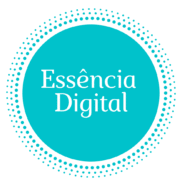In the competitive creative freelance economy, your portfolio is not a passive gallery of your greatest hits. It is an active, strategic sales tool. Every element—from the projects you select to the words you use—should be engineered to achieve one primary goal: convincing your ideal client that you are the best possible solution to their problem.
A beautiful portfolio can demonstrate talent, but a strategic portfolio demonstrates value. It moves beyond just showcasing what you can do and powerfully communicates how you think, why you make certain decisions, and the tangible results you can deliver.
This guide provides a framework of strategic tips to help you elevate your portfolio from a simple showcase into a powerful client-acquisition machine.
The “Problem-Solver” Framework: Answering the Client’s Core Question
Clients are not hiring you just for your aesthetic or technical skills; they are hiring you to solve a problem. They have a business challenge, and they are looking for a professional who can provide a solution. Your portfolio needs to prove that you are that problem-solver.
Adopt a case study format for your key projects to tell a complete story. For each piece, guide the viewer through this narrative:
- The Client & The Challenge: Briefly introduce the client and clearly state the problem they were facing. (e.g., “A new wellness brand was struggling to connect with a younger audience and needed a fresh visual identity.”)
- Your Strategic Approach: This is where you reveal your value. Don’t just show the final product; show your thinking. Include sketches, wireframes, or strategy notes. Explain why you chose a particular direction. (e.g., “We conducted market research and developed a vibrant, minimalist brand system that resonated with Gen Z aesthetics.”)
- The Tangible Result: Close the loop by showcasing the final work and, crucially, its impact. Whenever possible, use quantifiable metrics or a strong client testimonial. (e.g., “The rebranding led to a 40% increase in social media engagement and was featured in Design Weekly.”)
This framework shifts the perception of your work from a “cost” to a valuable “investment.”
Your Platform is Your Stage: Matching Format to Expertise
The platform you use to host your portfolio is the stage upon which your work performs. The best format is one that not only looks professional but also authentically reflects your specific skills.
- For Designers & Illustrators: Behance is excellent for long-form, detailed case studies. Dribbble is like a highlight reel, perfect for showcasing stylistic flair and quick visual hits. A custom site built on Webflow or Framer can itself be a portfolio piece, demonstrating your product design and development skills.
- For Writers & Content Strategists: A professional website or blog is ideal for showcasing thought leadership. Platforms like Medium, Contently, or even a well-curated LinkedIn Articles section can demonstrate your expertise. Always present your work as clean, readable articles, not just links to PDFs.
- For Developers: Your GitHub profile is your non-negotiable technical resume. However, your portfolio site is where you bring it to life. Showcase live projects, explain the technical challenges you overcame, and link back to the relevant repositories.
- For Photographers & Videographers: Your portfolio must be highly visual and immersive. Choose a minimalist platform like Squarespace or Format that prioritizes large, high-resolution imagery and fast loading times. Organize your work by theme or project (e.g., “Portraits,” “Brand Campaigns”).
Beyond the Pixels: Injecting Your Brand Voice
In a sea of talented creatives, your personality and professional voice can be your most powerful differentiator. Clients hire people they connect with and trust. Your portfolio’s copy is a prime opportunity to build that connection.
First, define your brand voice. Are you:
- Witty and bold?
- Calm, authoritative, and strategic?
- Playful and energetic?
- Minimalist and direct?
Ensure this voice is consistent across your “About” page, project descriptions, and calls to action. It makes your portfolio feel cohesive and authentic. Remember: people don’t hire a portfolio; they hire the person behind it.
The Trust Engine: Leveraging Testimonials and Social Proof
Social proof is a psychological shortcut to building trust. When a potential client sees that others have successfully worked with you, it dramatically reduces their perceived risk.
Integrate a “trust engine” into your portfolio with elements like:
- Direct Testimonial Quotes: Place a short, powerful quote from a client directly within its corresponding case study.
- “Brands I’ve Worked With” Logo Bar: If you have worked with recognizable companies, a clean logo bar can add instant credibility.
- Awards and Recognition: Prominently display any industry awards or publications you’ve been featured in.
- Video Testimonials: A short, 30-second clip of a happy client is incredibly persuasive.
Pro Tip: Build a system to request a testimonial at the conclusion of every successful project.
The Data-Driven Portfolio: Using Analytics to Optimize
Treat your portfolio like a product that you are constantly improving. By installing free tools like Google Analytics 4 or Microsoft Clarity, you can gain invaluable insights into how potential clients are interacting with your site.
Track these key metrics:
- Most Viewed Projects: This tells you which of your work resonates the most with your audience. Feature these projects more prominently.
- Time on Page: Are people reading your detailed case studies or just glancing and leaving?
- User Flow and Drop-Off Points: Where are visitors leaving your site? This can help you identify a confusing navigation element or a weak call to action.
Use this data, not just guesses, to refine and optimize your portfolio for better results.
Conclusion
A strategic creative portfolio is a living, breathing ecosystem where your skills, your story, your personality, and your business goals converge. It is your hardest-working employee, operating 24/7 to make your case to the world.
Don’t just build a portfolio that shows your work. Build one that does the work for you—attracting, engaging, and converting your ideal clients into your next great project.

